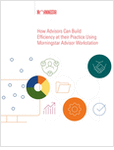At the end of 2015, the private capital industry — including private equity, private debt, real estate, infrastructure and natural resources — had $4.3 trillion in assets under management, up from $4 trillion at the end of 2014 and $2.8 trillion in Dec. 2010, according to a new report from alternatives data provider Preqin.
Unrealized value remaining in funds accounted for $2.9 trillion of total assets, while dry powder amounted to $1.4 trillion.
Private equity firms held the bulk of assets, $2.4 trillion, followed by private real estate with $809 billion, private debt with $561 billion, natural resources with $404 billion and infrastructure with $331 billion.
In order to show what kinds of returns investors could expect over different time frames, Preqin used cash flow data from some 3,200 private capital funds to calculate horizon internal rates of return.
All told, it found, private capital funds’ IRRs over one, three, five and 10 years to the end of December outstripped public indexes, including the S&P 500, MSCI Europe and MSCI Emerging Markets.
Europe-focused funds had the highest one- and three-year horizon IRRs, while over the five years to the end of 2015, both Europe- and North America-focused funds returned almost 15%.
“The private capital industry has seen median net IRRs steadily climb in recent years, and among 2012 vintage funds they have reached their highest level since 1995,” Selina Sy, editor of Preqin’s 2016 Alternative Assets Performance Monitor, said in a statement.
Preqin’s PrEQIn Index, which measures the returns investors earn based on the actual amount of money invested at a given point in time, showed that private capital funds had reached 322 index points by the end of 2015 from a starting point of 100 at the end of 2000.








 September 02, 2016 at 09:12 AM
September 02, 2016 at 09:12 AM










